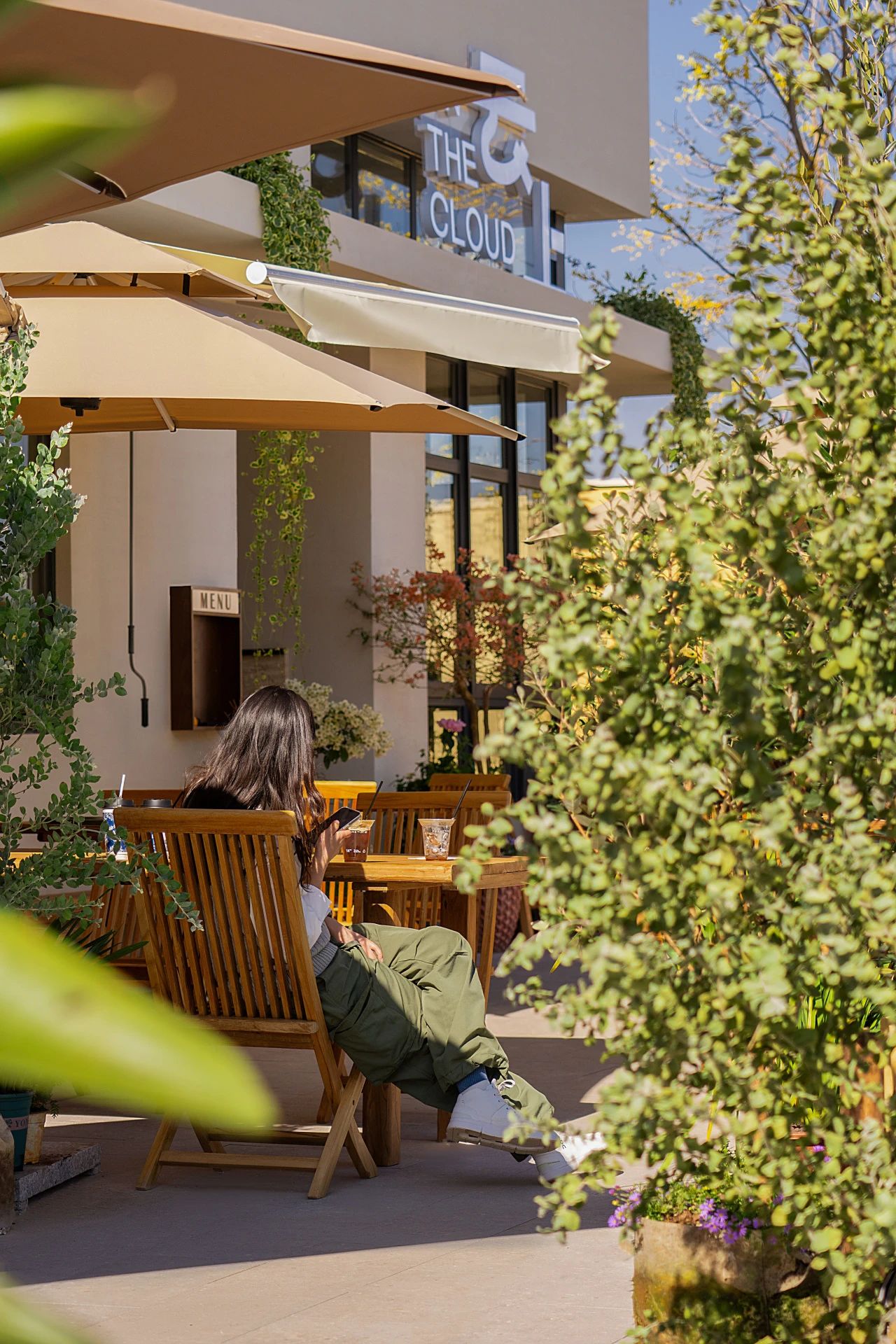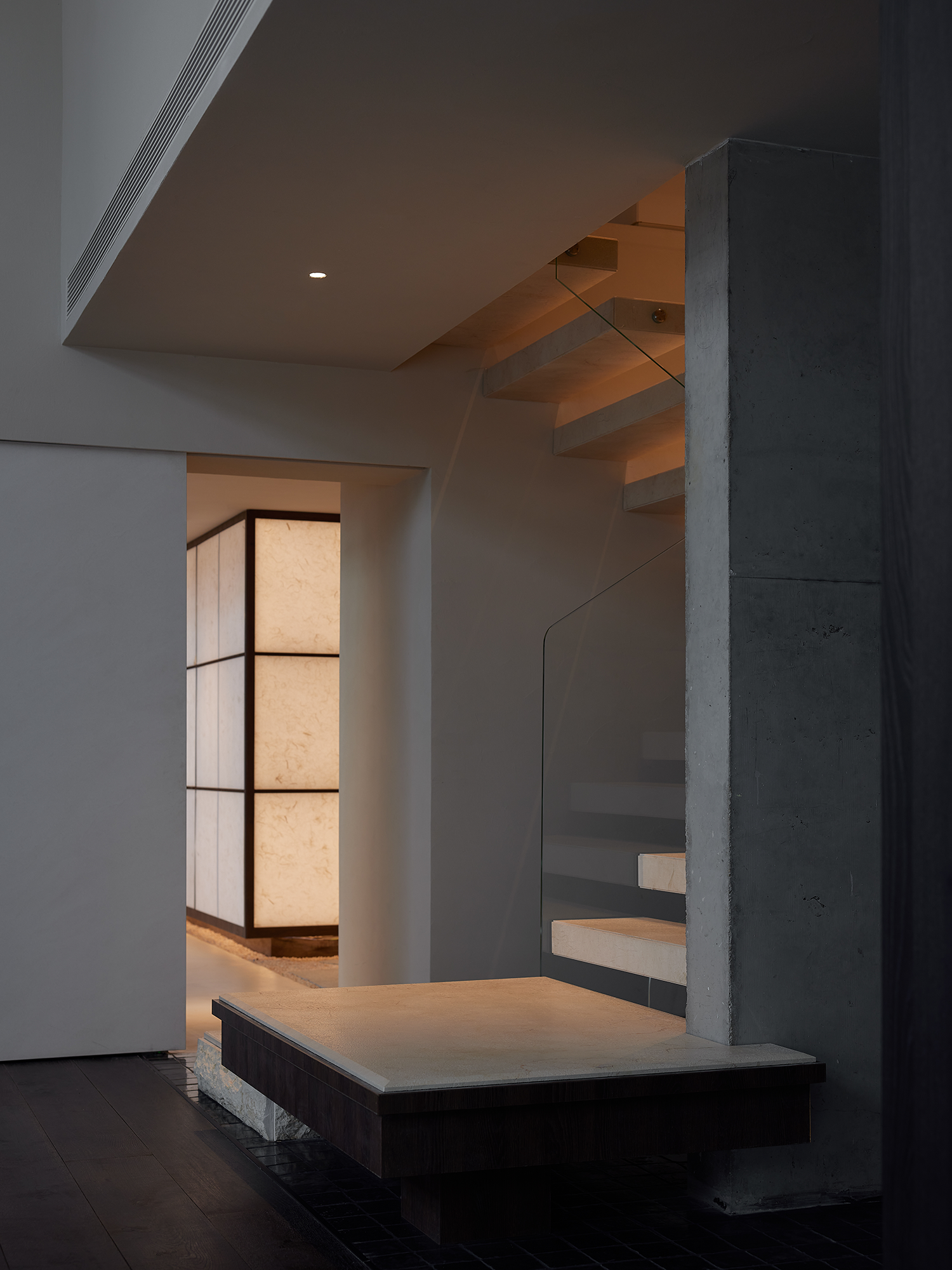House on a Slope Gian Salis Architect
2015-09-04 03:00
“建筑的每一部分都应该有自己的美丽和力量。这座房子的设计就好像结构工程已经存在了一段时间,而室内装束只是现在才出现。由此产生的‘房间之间’使房子变得更加开放。”
"Each part of the construction should have its own beauty and power. The house was designed as if the Structural work would have existed for some time and the Interior outfitting come only now. The thereby arose 'in between rooms' give the house its openness.”
Courtesy of Gian Salis Architect
建筑工地上长满了天然树木,坐落在陡峭的山坡上,从莱茵河平坦的山谷一直延伸到巴士勒,前景广阔。在早期,葡萄藤是在朝阳的山坡上种植的。客户的愿望是要一个负担得起的小房间,但它仍然与未损坏的乡村通过大窗户互动。
The building site is overgrown with natural wooded undergrowth on a steeply inclined hillside with a wide prospect over the flat valley of the River Rhine as far as Basle. In earlier times grapevines were cultivated on the sun-facing hillside. The client’s wish is for an affordable house with small rooms, but which nevertheless interact with the unspoiled countryside via large windows.
Courtesy of Gian Salis Architect
基于这种地形,两道梯田墙-同时形成一个驯服的领地-构成了房屋的基本结构,并将其固定在山坡上。下面的墙在房子前面建立了一个庭院。它的一个大开口通向车库和车间。沿着山坡的路线,围绕着梯田的墙壁,一个人来到了楼上的入口处和卧室的楼层。此时,第二道梯田墙为入口处创造了空间,通向悬臂屋顶下的房屋,并形成一条视线从另一边延伸到乡村。这堵墙贯穿整个房子,构成了它的脊梁。辅助室,如衣柜和更衣室,被布置在未经处理的暴露在山坡上的混凝土墙后面。卧室和浴室被布置到山谷,隔开了轻松木芯板墙.插在墙上的具体台阶通向上面的开放式客厅和餐厅.一个露台突出在这层楼的前面,而同样的墙形成了稳定开放空间的背面。两个大开口通向后面的空间层,厨房和附属房间,使房子后面的山坡是有形的。
Based on this topography, two terracing walls – that simultaneously create a tamed territory – form the basic structure of the house, and anchor it in the hillside. The lower wall creates a courtyard in front of the house. A large opening in it leads to the garage and the workshop. Following line of the hillside around the terracing walls one comes to the upper entrance and bedroom storey. At this point the second terracing wall creates a space for the entrance area, leading into the house beneath the cantilevered roof and creating a line of sight out through the other side back out into the countryside. This wall runs through the entire house, constituting its backbone. Ancillary rooms such as the wardrobe and changing room are arranged behind the untreated exposed-concrete wall on the hillside. Bedrooms and the bathroom are arranged out towards the valley, separated by light pine-chipboard walls. Concrete steps inserted into the wall lead up to the open-plan living and dining room above. A terrace juts out in front of this storey, whilst the same wall forms the back that stabilises the open-plan space. Two large openings lead through to the rear spatial layer with the kitchen and ancillary rooms, making the hillside behind the house tangible.
Courtesy of Gian Salis Architect
楼层天花板的不同凸出形成了露台和突出的屋顶,创造了特定的外部空间作为对应的每一个内部空间。这一效应通过大窗户塑造了室内空间的特征。例如,面对山坡和灌木丛的房间是阴凉的,有些内向,而当窗户打开时,面对山谷的平衡室几乎变成了圆顶。亚麻布窗帘和水平板百叶窗可以控制透光率。巨大的突出屋顶可以防止夏季过度暴露在阳光下,而在冬季,低洼的太阳会使保温混凝土变暖。
The varying projections of the storey ceilings form terraces and protruding roofs, creating specific exterior spaces as counterparts to each interior space. This effect molds the character of the interior spaces via the large windows. For instance the rooms facing the hillside and the undergrowth are shaded, cool and somewhat introverted, while the counterpoised rooms facing the valley almost become loggias when the windows are opened. Linen curtains and horizontal slat blinds allow the degree of light permeability to be controlled. The large protruding roofs prevent an over-exposure to sunlight in summer, whilst in winter the low-lying sun warms the heat-retentive concrete.
Courtesy of Gian Salis Architect
结构墙和屋顶是由未经处理的外露混凝土制成的。在那些地方,房间是附在一起的,混凝土外墙用矿物绝缘处理,用光滑的粘土灰泥进行处理。这种保温层在油松窗框的骨架加宽处是可以看得到的。内墙保持在裸露的混凝土中,而地板同样在暴露的水泥板中。无承重的墙壁,门和橱柜是由廉价的松木芯板制成的.栏杆是由薄的,轧制的不锈钢部分焊接在一起。尽可能所有的材料都是在它们的原始状态中使用的,并且随着时间的推移,这些材料都被用来假设它们的自然形态。建筑细节是直接而自然地形成的,简单的阴影缝隙将不同的建筑元素分开,使它们具有自主的外观。相比之下,建筑元素的尺寸和比例是由轻盈和细腻决定的,以使建筑具有一定的高贵气息。
The structural walls and roofs are made of untreated exposed concrete. In those places were the rooms are attached, the exterior concrete walls are treated with mineral insulation and rendered with a smooth clay plaster. This insulating layer is externally legible at the framework widenings of the oiled pinewood window frames. The interior walls remain in exposed concrete, whilst the floors are likewise in exposed cement screed. Non-load-bearing walls, doors and cupboards are made of inexpensive pine chipboard. The railings are composed of thin, rolled stainless-steel sections welded together. As far as possible all of the materials are used in their raw states, and are intended to assume their natural patina over time. The construction details are formed directly and naturally, whereby simple shadow gaps separate the various building elements giving them an autonomous appearance. In contrast the dimensioning and proportioning of the building elements are dictated by lightness and subtleness in order to lend the building a certain air of nobility.
Courtesy of Gian Salis Architect
Architects Gian Salis Architect
Location Grenzach-Wyhlen, Germany
 举报
举报
别默默的看了,快登录帮我评论一下吧!:)
注册
登录
更多评论
相关文章
-

描边风设计中,最容易犯的8种问题分析
2018年走过了四分之一,LOGO设计趋势也清晰了LOGO设计
-

描边风设计中,最容易犯的8种问题分析
2018年走过了四分之一,LOGO设计趋势也清晰了LOGO设计
-

描边风设计中,最容易犯的8种问题分析
2018年走过了四分之一,LOGO设计趋势也清晰了LOGO设计




.jpg)



.jpg)



































.jpg)

.jpg)

.jpg)





























